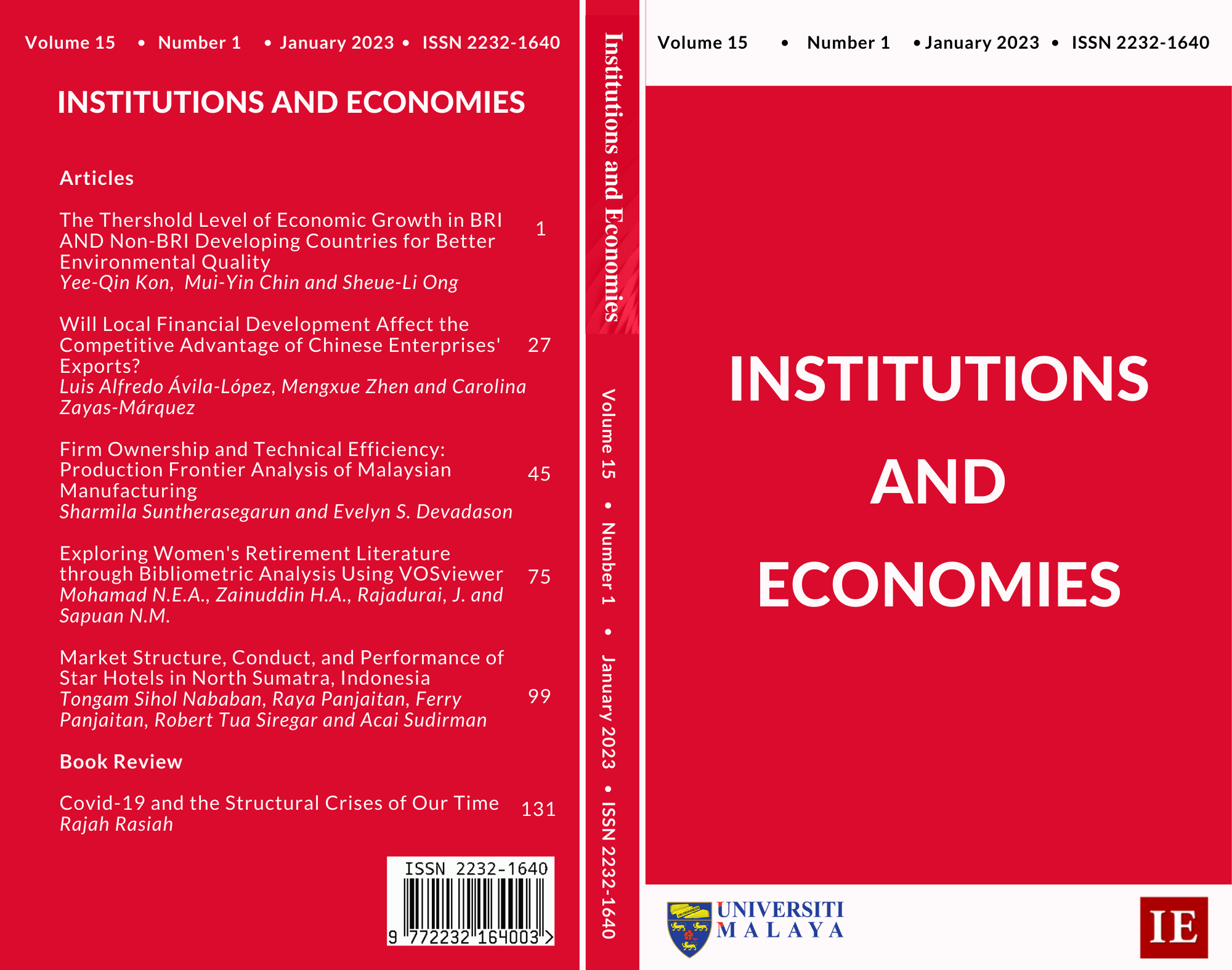The Threshold Level of Economic Growth in BRI and Non-BRI Developing Countries for Better Environmental Quality
Main Article Content
Abstract
This study investigates the nexus between economic growth and carbon dioxide (CO2) emissions. Specifically, this study employs a dynamic panel threshold model to identify and compare the threshold levels of economic growth between developing countries participating and not participating in the Belt and Road Initiative (BRI). The findings signify a nonlinear relationship between the sampled countries’ economic growth and their CO2 emissions in both categories. Furthermore, the result of dynamic panel threshold model reveals that the threshold level of economic growth, in the category of BRI developing countries, was lower (US$ 887.49) as compared to non-BRI developing countries (US$ 1358.57). This implies that the impact of economic growth in developing countries participating in the BRI was less harmful to the environment, and that these countries are more alert to environmental issues once the threshold of their gross domestic product per capita was achieved. Hence, Chinese authorities should put in more effort in facilitating sustainable infrastructure development to attract more developing countries to join the BRI to mitigate environmental degradation.
Downloads
Article Details
Submission of a manuscript implies: that the work described is original, has not been published before (except in the form of an abstract or as part of a published lecture, review, or thesis); that is not under consideration for publication elsewhere; that its publication has been approved by all co-authors, if any, as well as tacitly or explicitly by the responsible authorities at the institution where the work was carried out. Transfer of copyright to the University of Malaya becomes effective if and when the article is accepted for publication. The copyright covers the exclusive right to reproduce and distribute the article, including reprints, translations, photographic reproductions, microform, electronic form (offline and online) or other reproductions of similar nature.
An author may self-archive the English language version of his/her article on his/her own website and his/her institutions repository; however he/she may not use the publishers PDF version which is posted on www.ijie.um.edu.my. Furthermore, the author may only post his/her version, provided acknowledgement is given to the original source of publication and a link must be accompanied by the following text: The original publication is available at www.ijie.um.edu.my.
All articles published in this journal are protected by copyright, which covers the exclusive rights to reproduce and redistribute the article (e.g. as offprint), as well as all translation rights. No material published in this journal may be reproduced photographically or stored on microfilm, in electronic database, video disks, etc., without first obtaining written permission from the publishers. The use of general descriptive names, trade names, trademarks, etc., in this publication, even if not specifically identified, does not imply that these names are not protected by the relevant laws and regulations.
The copyright owners consent does not include copying for general distribution, promotion, new works, or resale. In these cases, specific written permission must first be obtained from the publishers.

